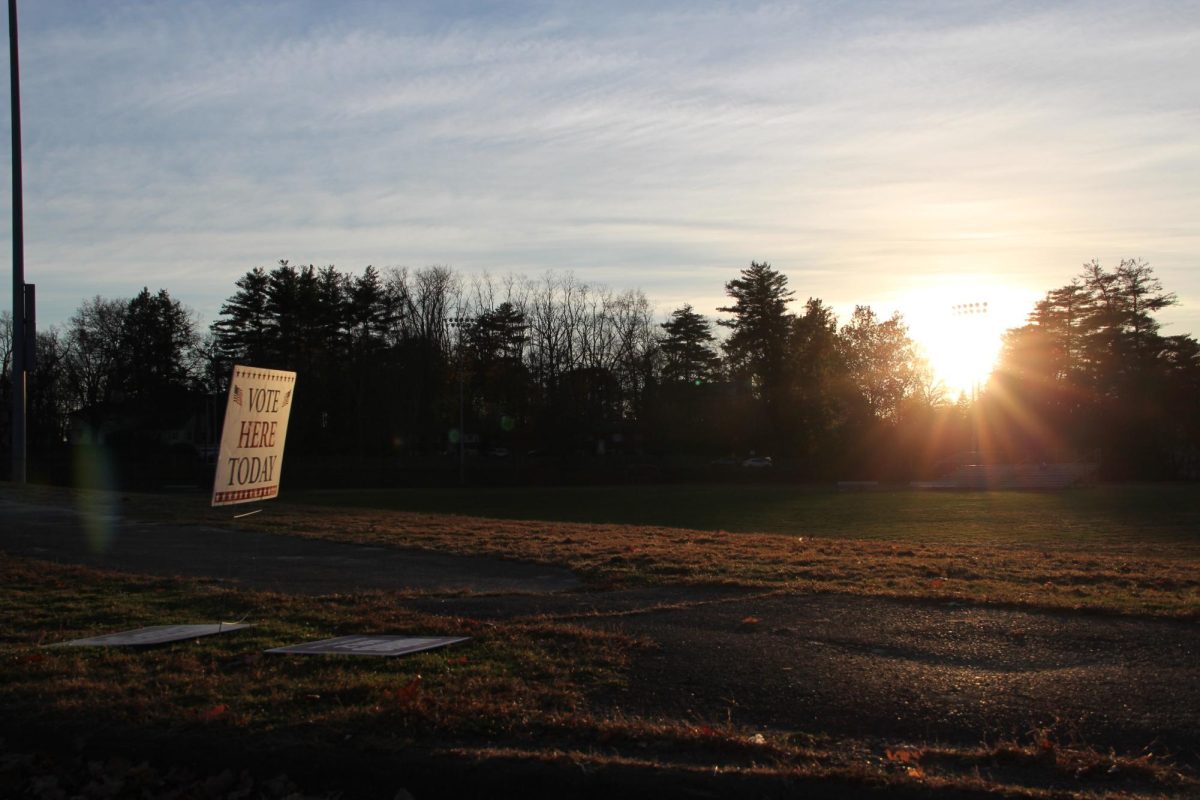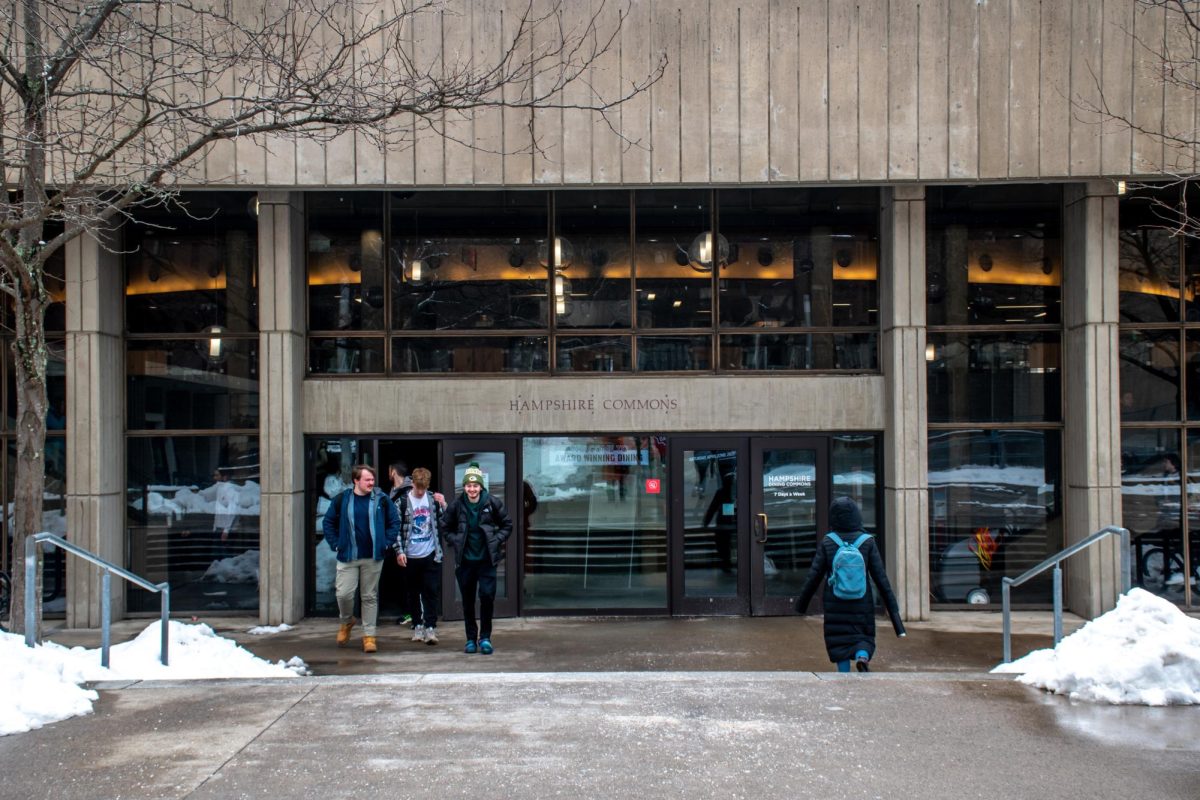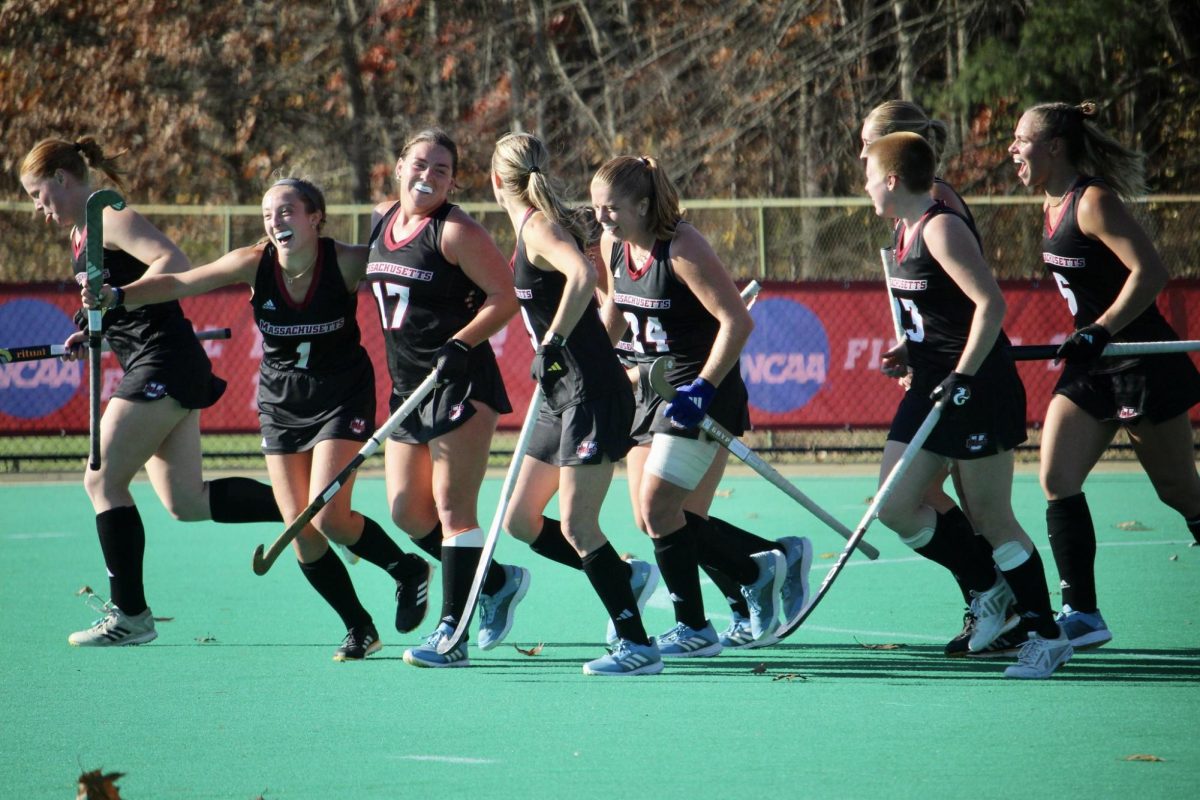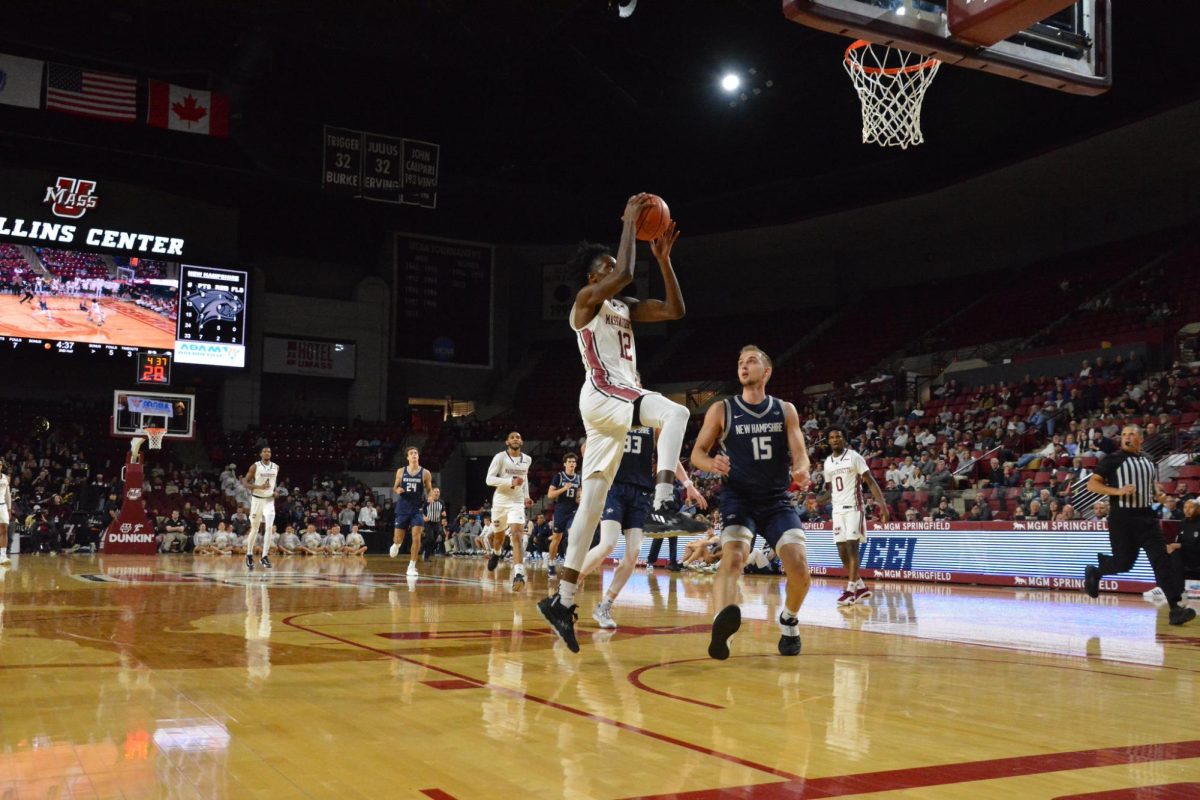
Cold and snowy weather led to a low turnout at the Electric Vehicle Ride and Drive Tuesday morning at the University of Massachusetts.
Hosted by Transportation Services from 9 a.m. to noon, the event gave students, faculty and other community members the chance to test-drive electric vehicles in the parking lot in front of the Transit Building.
Though both a Nissan Leaf and a Tesla were expected to be available, the Tesla, which was to be driven in from Boston, did not make the trip because of the weather.
Three Nissan Leafs were brought in from Jerry Rome Nissan in West Springfield, and Commercial Sales Specialist Peter Scagliarini was on site to answer questions about the vehicles.
Scagliarini said that electric vehicles experience “less mechanical failure” than gas-powered cars. Diana Noble, assistant manager for Transportation Services, elaborated on this and explained that “there are far (fewer) moving parts” and thus EVs “need a lot less maintenance.”
In fact, according to William Watts, who works as a transportation specialist at Transit Services, there are only about six moving parts. EVs also don’t need any fluids, belts or hoses and don’t have an exhaust or transmission.
Because of their unique design, Watts said that EVs have no emission and cause no environmental impact while running.
Currently there are three different levels of charging for EVs. Level one, which Scagliarini calls the “trickle charge,” is done at home overnight.
A level two charge, which can take a few hours, occurs at stations in town. There is a level two charging station at the Courtyard by Marriott hotel in Hadley, and several are located throughout Northampton, including at the Big Y grocery store and the fire department.
Recently, a level three charge, also called a DC fast charge, was invented. It can provide a car with 80 percent battery life in 30 minutes. After the Ride and Drive event, Transportation Services celebrated the installation of the first level three EV charger in Massachusetts, which is now located at the Transit Building.
The level three charger, which is valued at $35,000, was donated by Nissan USA, according to a UMass press release. However, the University covered the cost of installation.
Currently, the Nissan Leaf is the only typical passenger car that is mechanically set up to accept a level three charge, according to Noble.
In addition to the innovative level three charging station, Transportation Services is installing two pairs of level two chargers, which they hope to have ready for use by the end of the semester. According to Noble, one set will be located at the Robsham Visitor’s Center and the other two will be located in the parking garage.
Much of the funding for the level two chargers, which cost about $1,000 each, came from Parking Services, the Chancellor’s Office and other sources, according to the release.
However, a catch-22 has limited the EV’s popularity. There is no need to have charging stations if no one buys EVs, yet nobody will feel safe buying an EV if there aren’t charging stations available for them. Noble said that UMass is trying to solve this ‘chicken-or-the-egg’ problem by setting up the charging stations on campus.
“The University is hoping to be on the forefront for (the expansion of EVs),” Noble said. “It’s pretty exciting.”
Scagliarini added that “not everybody’s ready for (EVs) yet,” in the sense that people simply aren’t used to plugging in a car, and want the security provided by traditional gas-powered cars that can travel 300 to 400 miles on a single tank.
“The more available the charging stations are, the more (ready) people will be to say, ‘I can do this,’” Scagliarini said.
Though it may seem difficult to find charging stations, many EVs feature a built-in GPS that can pinpoint their locations, according to Watts. A website called Chargepoint.com performs the same function. Users of Chargepoint.com also receive an account which is electronically linked to their debit card and can be used to pay at charging stations.
Members of the UMass community who are interested in purchasing an EV are in luck. According to the release, Watts arranged a long-term deal with Jerry Rome Nissan. As a result, faculty and students can purchase or lease EVs at the price they are available to the auto manufacturer’s employees.
Though the attendance for the Ride and Drive was low, Noble hopes that Transportation Services will hold similar events in the future. She explained that Transportation Services hopes to not only make people aware of the difference between EVs and gas-powered cars, but that it also wants “students, staff, faculty and also the community to know that UMass is here to support electric vehicles.”
Shelby Ashline can be reached at [email protected].



















bruce dp • Feb 19, 2014 at 6:05 am
In this news item, the writer voices their fears from their EV ignorance. They, like many that resist change and do not make the effort to learn of these new vehicle technologies, will be left on the sidelines grumbling that no one loves them (they only have themselves to blame for staying ignorant).
It is the greedy-price of petroleum and the headaches of chemical-fuel engine (ice) maintenance (they are designed to self-destruct) that is causing this change. And change is not linear (slow), it is fast as more people drive electric.
>Recently, a level three charge, also called a DC fast charge, was invented.<
[ref
http://green.autoblog.com/2010/03/15/chademo-suggests-drinking-green-tea-while-recharging-your-electr/
]
The Leaf EV uses DC level-3 charging (EVSE), which was given to the world at the time of the Leaf's launch in 2010. To the layman four years seems recent. But to those familiar with new technologies, you have to look at the time line like they are in 'dog years': 1 year old is more like 7 years old. So, CHAdeMO's 4 years old is not that new as it really is like a 30 year old technology.
Level-3 is not new either, it was shown at EVS-12 when GM ganged several of their 6kW inductive chargers to offer a 20 minute recharge to 80%SOC. Level-3 is key to EV use, and should be planned to be incrementally installed every 50 miles.
GM has its own combo css AC level-3 but there is no significant number of these in the public (moot). Tesla has its own 3 phase AC technology and with in a month has completed installing enough of these SuperStation EVSE so Tesla-S EV drivers have driven across the U.S. (from L.A. to NYC).
In reality, level-1 is not used that much. IT is best used when there is a long period of time when the plugin (EVs and plug-in-hybrids) is at rest (while sleeping, at work, in the long term airport parking lot, etc.). Most plugin drivers use a low-power 3kW version of level-2 (~the power of two refrigerators) when they charge at home. Some EV drivers opt to have an on-board 6kW level-2 charging ability. This is handy when charging in the public and when charging at home when using a Utility's discounted time-of-use rates (a shorter period of time late-at-night).
Here is a link that shows the energy.gov database of EVSE available to the plugin driver
http://www.afdc.energy.gov/locator/stations/results?utf8=%E2%9C%93&location=01003&filtered=true&fuel=ELEC&owner=all&payment=all&ev_level2=true&ev_dc_fast=true&radius=true&radius_miles=10
The public should not take this writer's fears as fact, and should make time to learn about this new vehicle technology. Sadly, dealer reps are rarely a good source of information as they are usually ill informed, are only after a quick sale, and will try to talk you into a fuel-burner. Instead, learn of the plugin vehicles available, and use the free online forums to ask questions and get answers from actual drivers. They will tell you want these vehicles will and will not do. Also, seek out your nearest EAAev.org Chapter or EV group. They meetings are free, and a great way to network with daily EV drivers.
{brucedp.150m.com}